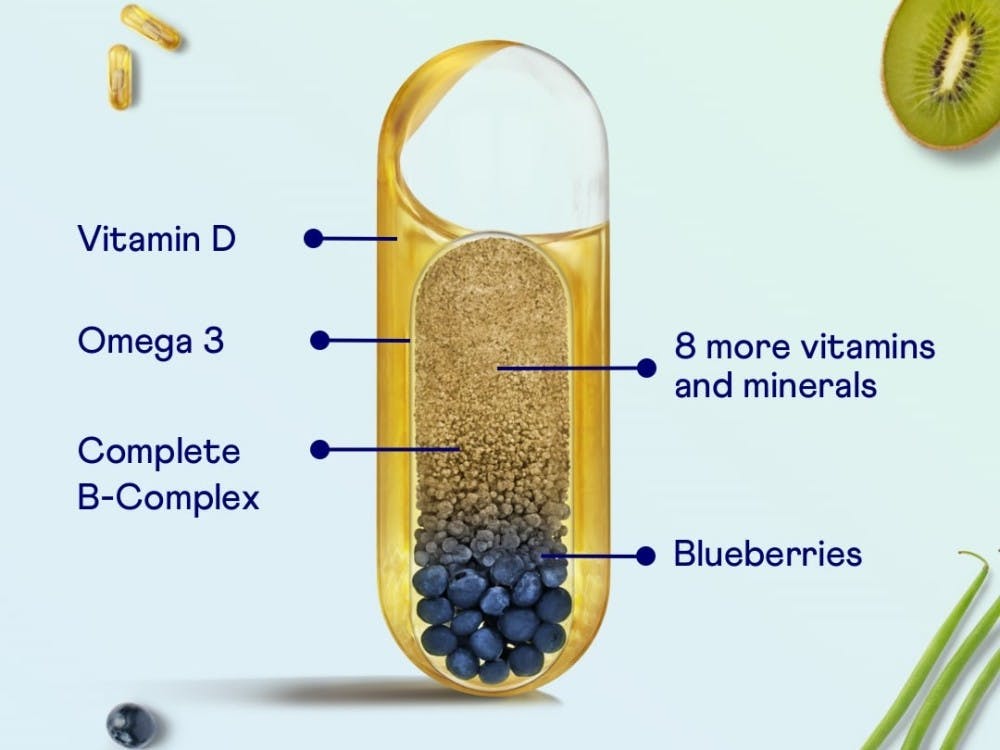What is an NRV? An Introduction to Dosages
Understanding the initials at the core of Vitals⁺, and how they affect you.

What does NRV mean?
What does NRV mean? It’s a fair question. The short answer is a nutrient reference value, but on its own, that’s not particularly helpful.
Nutrient labels tend to have initials plastered everywhere—NRV, RDA, DRV, SUL, LRNI—it’s a lot. But it doesn’t need to be that confusing. An NRV is the recommended daily quantity of a nutrient for the average person meaning how much should you be getting on a daily basis of that nutrient. That’s it. We used to use the term recommended daily allowance, but it’s been replaced. For large quantities (think 260g of carbs) there’s the reference intake (RI) and for smaller quantities (10μg of vitamin D), there’s the NRV.
Why do NRVs matter?
Both kale and grapes have sugar in them, but that doesn’t mean they’re interchangeable. The same is true with vitamins. A supplement with a vitamin B12 content of 15% NRV or 1000% NRV could both be labelled as containing B12. That’s a pretty big difference, and one you want to know about.
Understanding NRVs for vitamins and minerals is important in understanding how nutrients will benefit you. It’s also helpful for planning your diet—if you know what you need, you can adjust your intake accordingly.
Give your brain what it needs to reach full potential with Vitals⁺
Who sets the NRV of vitamins and minerals?
Governments conduct huge nutritional surveys, and use that data to determine the levels of nutrients that we need in our diet.
NRVs also change from country to country. At first, that might seem strange—we all have basic chemical requirements. But societal and environmental factors also play a role. For example, the NRV of vitamin D in the UK is twice that of Australia. More sun means that Australians are generally less reliant than Brits on dietary sources of vitamin D.
And as NRVs are set across populations, they’re averages. We’re all unique, and our dietary requirements are too. But there are some limits in place. Certain vitamins and minerals can be toxic in high levels so to reflect that, there’s a designated Safe Upper Limit (SUL), which you probably shouldn’t exceed.
How do we approach NRV
With the Vitals⁺, our neuroscientist Dr. Tara Swart and dietitian, Sophie Medlin, have thought carefully about getting the dosages right (reviewing 70+ scientific studies) for the various nutrients included:

Let’s start with vitamin D. There’s 45μg in each dose, 4.5 times the UK NRV. That’s 40% of the SUL (Safe Upper Limit), so even with food and sunlight, there’s very little risk of exceeding the upper limit.
For something like iron, though, the SUL is closer to the NRV. It’s also much easier to get iron from your diet, so for that reason, we only put 30% of the NRV in each dose. Consistently overdosing on iron isn’t fun.
At the other end of the scale are the B vitamins. For example, each dose of Vitals⁺ contains about 2700% of the NRV of vitamin B1. Here, the NRV is really the minimum amount and higher levels have been shown to be beneficial and everyone absorbs differently.
There are no negative side effects from taking this larger amount— the Safe Upper Limit is still three times higher than the Heights Vitals⁺ dose. And if you do end up with more B1 (or any other water-soluble vitamin) than your body can process, you’ll just pee it out. No harm is done.
Find out why Vitals⁺ is the highest rated in the world, and how it helps to keep you feeling better, every day.